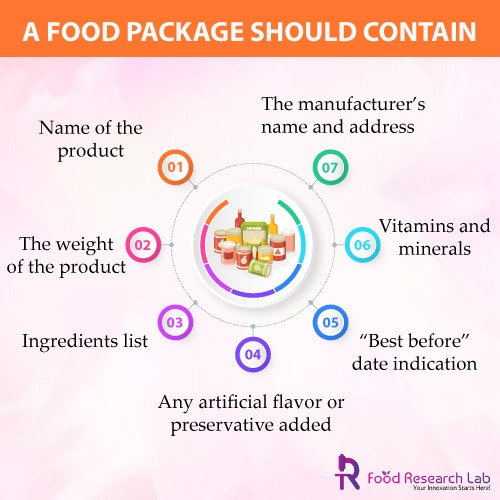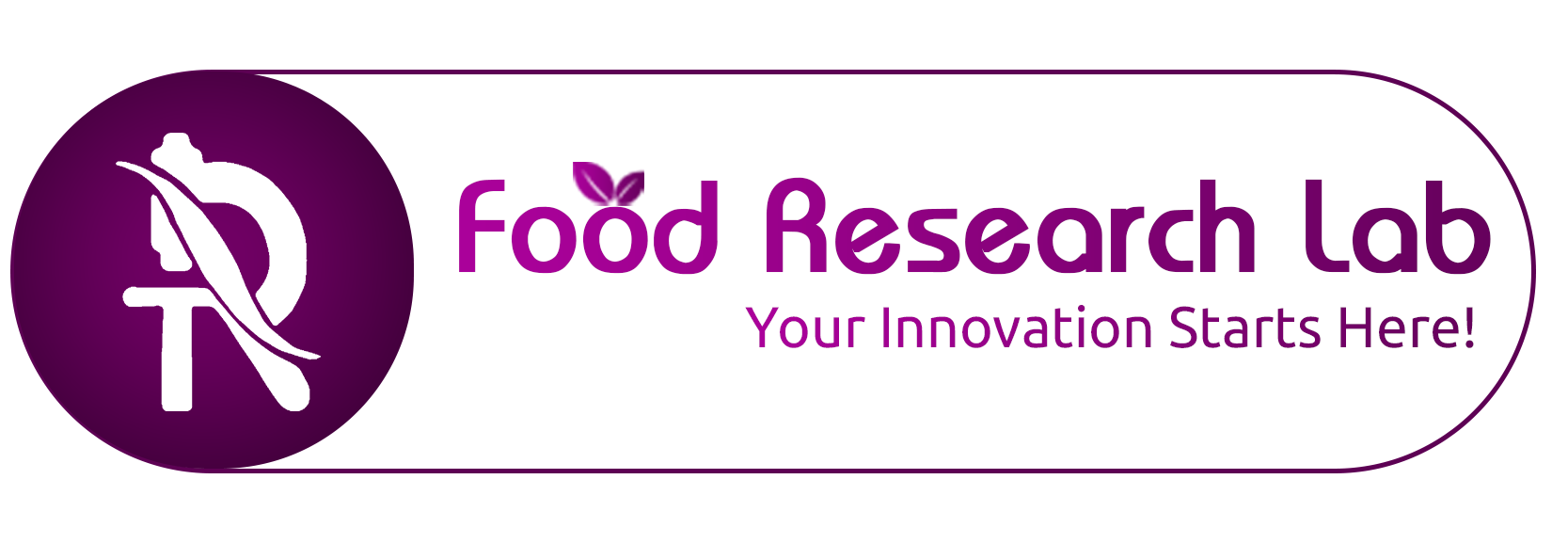Food labels and packaging must satisfy the following food labelling requirements information by law: Food packaging and labelling should include the food’s name must be mentioned and not deceptive. Always utilize the legal name. You can use a customary name in the absence of a legal name. This could be a brand name that has become well-known among consumers through time.
Important Food Labeling and Packaging Components
Food labels and packaging must satisfy the following food labelling requirements information by law:
Name of the Food
Food packaging and labelling should include the food’s name must be mentioned and not deceptive. Always utilize the legal name. You can use a customary name in the absence of a legal name. This could be a brand name that has become well-known among consumers through time.
We should also provide a descriptive name for the food if there is no customary name. This must be satisfactorily descriptive to tell the consumer of the food’s genuine nature and distinguish it from similar goods. Most products get into this group and will need a descriptive name.
You must mention the procedure in the tile if you have processed product in any way, such as smoked bacon, salted peanuts, or dried fruit.
Ingredients In The Product
Suppose your food product has two or more ingredients (including water and additives). In that case, you must include them in the food packaging label all under the header “Ingredients” or another appropriate heading that consists of the word “ingredients.”
Ingredients must be mentioned in weight order, with the principal component listed first, based on the amounts required to prepare the cuisine. Some items, such as fresh fruits and vegetables, carbonated drinks, and single-component foods, are excluded from the requirement to display an ingredient list.

Information On Allergens
Allergens required by law to be declared as ingredients in a food product must be identified and highlighted in the ingredients list.
On the label, you should emphasize allergies by using a different font, style, background colour, or bolding the text. This allows consumers to learn more about the components in packaged meals, which is beneficial for persons who have food allergies or intolerances and must avoid particular foods. (1)
Ingredients Are Listed Quantitatively
It informs consumers on the percentage of specific ingredients in a food product. This is required when the following item or group of elements is involved:
- Occurs in the food’s name or is commonly connected with it by the consumer;
- The labelling in words, drawings, or graphics is emphasized; or
- Is necessary for identifying food and distinguishing it from goods with which it may be confused due to similar names or appearances.
The quantity of an ingredient or a group of elements must be indicated as follows:
- be expressed as a percentage that reflects the amount of the component or ingredients at the moment of application;
- Appear in or directly next to the food’s name or in the ingredient list concerning the ingredient or category of ingredients in question.
Net Weight Of The Product
To comply with the Food Information Regulations, all packaged foods weighing more than 5g or 5ml must display the net quantity on the nutrition facts label. The drained net weight of foods packaged in liquid (or an ice coating) is required.
In the case of foods, the net quantity statement is not required:
- That are subject to significant volume or mass losses and are sold by number or weighed in the presence of the buyer;
- Unless they are herbs or spices, have a net quantity of less than 5 g or 5 ml;
- Generally sold by the number, if the number of goods can be seen and counted from the outside or, if not, is specified on the labelling.
Date Labelling And Storage Conditions
Food labels must include a ‘best before’ or ‘use-by date to indicate how long items can be kept and how they should be stored. (2)
Manufacturer’s Name And Address
On the container or product label, food firms must provide their name and address. It has to be one of the following:
- the name of the company under which the food is sold;
- or the address of the company that imported the food
The address you offer should be a physical address where your company can be reached by mail. You can’t use a phone number or an e-mail address. Food labelling companies should include the place and company of manufacture. Giving consumers an address allows them to contact the maker if they have a problem with the product or want to learn more about it.
Instructions For Preparation
If necessary, instructions on properly preparing and cooking the food, including heating in a microwave oven, must be included on the label. If the item needs to be heated, the oven temperature and cooking time will usually be specified.
Declarative Nutrition
The necessary nutrition statement must be presented in a specific format and include energy and six nutrient values. The data must be expressed in units per 100g/ml (containing both kJ and kcal for power), and the nutrition statement must adhere to the minimum font size standards.
Additional Criteria For Labelling
Particular food and beverage products are subject to specific labelling regulations. If your products contain any of the following ingredients, you must inform the customer.
- Sweeteners or sugars
- Aspartame and colourings
- Liquorice
- Caffeine
- Polyols
There are many common errors to avoid during the food labelling process and including these additional points helps reduce them.
Conclusion
When food matches its description, it is said to be authentic. Consumers should have the correct information to make confident and informed food choices based on diet, allergies, personal taste, or cost.
Food that is mislabeled deceives the consumer and puts makers or traders in an unfair competitive position. Everyone has the right to know if the food they bought corresponds to the label’s description. One of our responsibilities is to help avoid food mislabeling and misleading descriptions.
Food Research Lab Provides Product Certification & Local Regulation Guidelines Services
Maintaining compliance with changing market and regulatory demands necessitates food product certification. Food Research Lab provides various food product certifications, food labelling guidelines, monitoring, and auditing services to meet the food labelling requirements.

Let’s create something Innovative and Delicious together
Food Research Lab strives for excellence in new Food, Beverage and Nutraceutical Product Research and Development by offering cutting edge scientific analysis and expertise.




